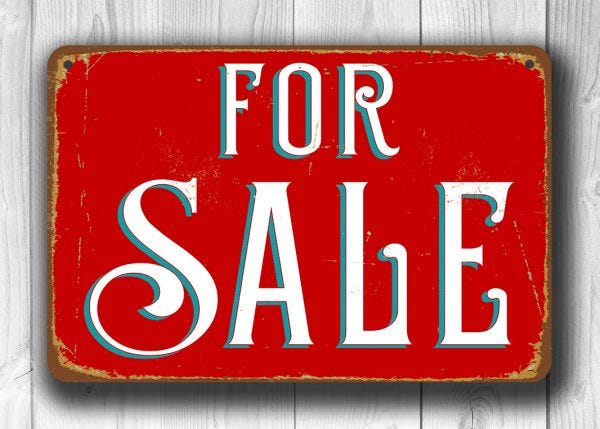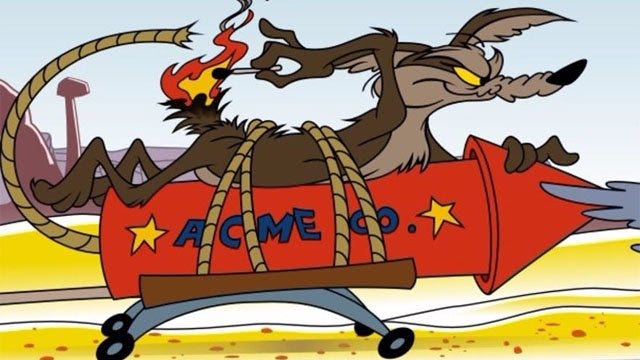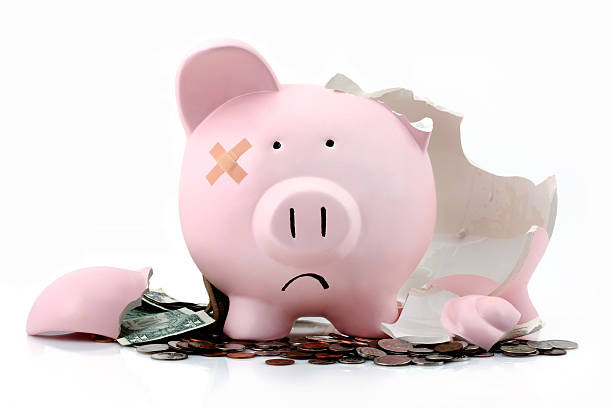Tesla: When a Spartan Diet + $2 Billion Isn’t Enough
Selling stock and bonds with prices at multi-year lows can spook already wary investors, as does waiting until cash is critically low.
Six weeks into the second quarter, and just two weeks after raising more than $2 billion selling stock and bonds, Tesla Motors (TSLA US) CEO Elon Musk alerted employees in an email after the market closed yesterday that he and the CFO need to do "hardcore" reviews of every expense "no matter how small" to keep the company from running out of cash.
This suggests potentially troubling demand trends and operating performance pressure have continued as I expected since the disastrous first quarter, when Tesla generated a massive near-record loss which drove available cash down to the lowest since January 2017 despite what should have been Tesla's third straight successful quarter since the launch of its flagship Model 3.
It's also obvious the company's long-awaited secondary stock offering priced only two weeks ago at just $243, which at the time was down 27% ytd and a two year low, came six months too late.
Back in December investors were confident in Tesla's ambitious guidance for deliveries, revenue, and profits, hopes that since then have been crushed by two straight quarters which trailed market expectations.
Tesla stock remains in free fall two weeks later, closing on Friday at $211—down 37% ytd and the lowest since December 2016 when the launch of Model 3 was still six months away.
Why Raise Cash With Tesla Stock and Bond Prices So Low?
It's generally not a good idea to hit the market asking for money when investors already are wary. It sends a worse signal when the company does it anyway.
The day before both deals were announced, Tesla's benchmark 5.3% senior notes had been struggling since March to hold above 85.
Tesla stock closed at $234 per share, the lowest since January 2017 and the latest leg of a 20% drop since the first of April.
That was when the company had announced shockingly low deliveries for March and the full quarter. Tesla warned then it expected "Q1 net income to be negatively impacted" but it still had "sufficient cash on hand." The company nevertheless affirmed guidance which indicates deliveries up 43-59% to 90-100 thousand in the second quarter--and similarly spectacular growth for the full year projected up 46-63% to 360-400 thousand versus 2018.
But three weeks later Tesla reported a stunning first-quarter loss of $702 million which devoured meager profits reported for the second half of last year and evaporated cash to the lowest balance in three years on plunging revenue which trailed even sharply reduced market estimates.
Why were investors blindsided by Tesla's weak first-quarter results?
The shock to the market was a consequence of Tesla reporting the appearance of profitability and positive cash flow for the previous two quarters without actually generating either from core operations.
I warned about this in "Great Magic Trick Tesla; Now Do It Again" which highlighted the fallacies in Tesla's "miracle" third quarter.
Then in "Tesla: Down to the Wire" I called out red flags which signaled how frantic was the close of the fourth quarter.
In Tesla - Truth and Consequences" and "Tesla's New Plan: Buy Before You Try" I noted similar accounting boosts and unusual items in the fourth quarter that again masked underlying weakness in demand and operating performance plus the serious cash burn I projected for the first quarter, and which the market had underestimated as I forecast in "Tesla’s Weak QTD Deliveries Signal March Expectation Madness" and "Quick Take on Tesla Q119 Deliveries: Yes, They Were Bad."
Pass the Tums
It makes little sense to look at y/y results since operating trends only began to normalize the second half of 2018 following the launch of Model 3, but sequential results versus the peak December quarter are telling.
Consolidated revenue fell 37% to $4.45 billion versus the December quarter, mostly on a 41% drop in auto segment revenue to $3.72 billion (82% of total revenue). Services & Other revenue fell 7% to $493 million and Energy & Storage skidded 13% lower to just $325 million.
The hit to auto segment revenue came from all directions: a 31% sequential drop in deliveries, significantly lower average pricing, a substantial erosion in mix as deliveries of higher-priced/higher margin Models S and X fell 56% versus the 20% drop in Model 3, and a $500.5 million charge to increase reserves for cars sold with a Resale Value Guarantee or Buy Back Guarantee.
As in previous quarters, revenue also was boosted by $215.6 million from the sale of energy emissions credits, which again tempered the drop in reported gross profit. Gross margin without those boosts dropped 64% versus the fourth quarter to $518 million, with the margin dropping 800 bps to 14.8% (15.2% excluding the impact of the charge for reserves).
Organizational chaos evident in the quarter (from multiple rounds of layoffs, closing and reopening stores, continued exits of senior executives, etc.) spiked SG&A, which Tesla offset with further troubling cuts to R&D which at $244 million (down 5%) was just 5.4% of revenue (excluding stock-based compensation).
This still is roughly half depreciation expense despite the long list of overdue new car and truck models languishing in its pipeline which Tesla still promises to launch next year.
Adjusted EBITDA plunged a stunning $920 million to just $85 million, a scant 1.9% margin of revenue versus 14% in the fourth quarter. Nominal EBITDA plus higher net total debt, which was up another $523 million even after paying off the $920 million convertible bond due in March, kept leverage high at 5.7x versus 6x.
The resulting net loss was $702 million, which wiped out the modest $140 million profit in the fourth quarter and $312 million generated in the third quarter. Those were the first profits Tesla had generated since the paltry $22 million back in the third quarter of 2016, and it has generated only four profitable quarters over its 16-year history.
The massive loss accounted for most of the $640 million consumed in cash from operations, which was the worst ever for any quarter and down $1.88 billion versus the $1.23 billion in cash generated from operations in the fourth quarter. Even with sharply reduced capex at $280 million--the lowest since 2016 and, again, seemingly inconsistent with Tesla's sizable to-do list--free cash flow was negative by $920 million.
Available cash dropped to less than $2.2 billion, down 40% versus the fourth quarter and the lowest since March 2016.
Not surprisingly, the tremendous cash drain threatened Tesla's already precarious liquidity, as shown in the chart below which I've updated from my report "Tesla “Autonomy Day” Takes Investors For Another Ride:"
We can see that even my low estimates back in March proved too generous because negative free cash flow by $920 million was nearly three times worse than my $350 million figure.
As a result, Tesla ended the quarter with only $1.03 billion in available cash when we exclude the $400 million cash cushion required by the credit facility and $768 million held in customer deposits. That balance also was boosted by another $352 million in net cash raised from borrowing plus proceeds from options, distributions from noncontrolling interests (solar VIEs), and "other" sources which kept unvarnished available cash from falling below $700 million.
The modest free cash flow of $100-200 million I estimate for the second quarter will barely move the needle to help cash given the $165 million still owed on the term loan due last December which has been pushed out to June, leaving indicated effective available cash at the end of June at just $613 million.
When Soon Becomes Right Now, Please
First quarter results confirmed the stark but not so surprising truth that Tesla really needs cash.
Yet when CEO Elon Musk was asked "why not raise capital?" on the first quarter earnings call, he lectured that he is focused on running the company with "strong financial discipline," being "frugal with capital," and avoiding"extraneous expenses."
"I don't think raising capital should be a substitute for making the company
operate more effectively," Musk said. "It's healthy to be on a Spartan diet for a while." He added, "there is some merit to raising capital. But this is sort of probably about the right timing."
Now we know he meant less than a week, just long enough for Tesla's bankers to finish paperwork clearly already underway on two desperately needed deals to raise more than $2 billion in cash from the sale of stock and convertible senior notes.
Early on Thursday, May 2nd, Tesla came to the market, hat-in-hand, to sell $1.35 billion in 5-year convertible senior notes and 2.7 million shares of stock. Both deals were upsized and priced the next day, following expensive concessions by Tesla which affirmed the company's apparent desperate need for cash.
The bond deal was bumped to $1.6 billion, $1.84 billion including additional notes purchased by deal underwriters. The bonds priced at par to yield 2%, thanks to an expensive hedge which cost Tesla a whopping $475.8 million. The hedge was partially funded with $174.4 million from the sale of associated warrants which cut Tesla’s net cost for the hedge to $301 million--but also lowered net bond proceeds after fees to less than $1.54 billion.
This indicated effective ytw on the bonds at a hefty 8.9%, higher versus the 8.3% ytw seen before the deals were announced for Tesla’s benchmark 5.3% senior notes maturing a year later in 2025. Then the new converts fell 4 points immediately in aftermarket trading to 100 before recovering to 104 by the following Monday. It didn’t stick.
Similarly, the stock deal was boosted to 3.086 million shares but priced at a paltry $243---lower versus $244 trading levels seen just of pricing. Final count sold increased to 3.55 million shares, which included nearly 463 thousand additional shares to underwriters, netting Tesla roughly $848 million after fees.
Tesla took home nearly $2.09 billion, but it could have netted $467 million more as recently as mid-December when the stock peaked at $377 because investors were still optimistic for a strong close to the fourth quarter. Those hopes were dashed when the fourth quarter proved disappointing on fading December sales (see "Tesla: Down to the Wire" and Tesla - Truth and Consequences”).
Instead, Tesla's has lost another $5.7 billion in market cap in the two weeks since the deals closed as the stock price continued to sink, with the new convertible bonds down to 94.5 and still falling.
Is it Enough?
Even before Musk's email to employees yesterday afternoon, it already looked like Tesla's latest cash infusion may not cure its liquidity pressure. Musk told employees that the $2.2 billion reported in available cash at the end of the first quarter "actually only gives us about 10 months at the Q1 burn rate to achieve breakeven!” Even this sobering projection seems optimistic.
The $1.54 billion net proceeds from the bond sale fall just short of covering the working capital deficit of $1.56 billion at the end of the quarter, which included $3.25 billion in accounts payable and $2.28 billion in accrued current liabilities. The $848 million netted from the stock sale barely covers remaining debt due the rest of the year ($165 million for the delayed term loan plus $566 million in convertible bonds maturing in November).
This leaves indicated effective available cash little improved versus my $613 million estimate as of June 30th as shown above, and far short of $1.72 billion projected in capex for the rest of the year plus another $700-800 million in interest payments.
So it looks like Tesla may need an additional $2 billion in cash, at least, to maintain effective available cash on hand at minimally sustainable levels, preferably generated as free cash flow from core operations versus sources from noncore and unusual items plus additional borrowing as it has done virtually every quarter for years.
That's a tall order considering first quarter auto sales revenue barely topped the June quarter last year, when the consolidated loss also was roughly the same, even though deliveries were 55% higher versus last summer when Model 3 was in early ramp-up. Three quarters later it's clear that US demand for Model 3 is already fading less than one year after launch, as I detected in fourth quarter trends, even after several significant price cuts.
Indeed, half of the 63,000 deliveries for the entire first quarter occurred in a mad scramble during the last ten days in March. Tesla claimed a myriad of logistics and organizational logjams, particularly in Europe and China, that supposedly impaired its ability to get enough cars to eager buyers.
The trouble with such excuses is Tesla has been delivering to Europe and Asia for five years, and at meaningful scale with Models S and X for two years, so it's not clear why overseas shipments of halting initial volumes of Model 3 blew up the system. Moreover, US deliveries slumped alarmingly throughout the first quarter even with significant price reductions. That's not logistics trouble or operational ineptitude, that's faltering demand.
There's more. Multiple rounds of price cuts, layoffs, and massive strategy revisions on the fly--like moving abruptly to an online-only sales model at the end of February--suggested a company in crisis throughout the first quarter. Tesla's mad dash to start building its Shanghai factory without funding revealed haphazard recklessness--as well as the reluctance from local Chinese banks to provide expected loans and local suppliers to sign service agreements.
Hurried sideshows like the disappointing launch of Model Y, the aborted offering of the long overdue $35K Model 3, and Musk's bombastic claims on Autonomy Day about the company's dubious Autopilot and Full-Service Driving (FSD) capabilities and prospects signal Tesla is running out of shell games to obscure its troubles (see “Tesla’s New Plan - Buy Before You Try,” "Tesla - Now We Know The Y, But Not the How" and "Tesla 'Autonomy Day' Takes Investors For Another Ride").
Selling stock and bonds when the company's securities were trading at multi-year lows confirmed Tesla is running out of options.
Second Quarter and Beyond
Tesla affirmed fourth quarter guidance given back in January, which means it expects to match or top by as much as 11% the fourth quarter's record 90,000 deliveries in each of the next three quarters this year. Indeed Musk suggested a terrific rebound in deliveries already was underway.
Even if that's true, which seems unlikely, volatile demand and pricing pressure plus eroding mix with sputtering sales of high margin Models S and X continue to erode revenue quality. This will be further offset by perpetual disorganization plus rising costs for service and warranty repairs in addition to extra costs for continued expansions in store count, supercharging networks, and overseas operations which continue to shrink margins even after multiple rounds of layoffs--a persistent threat to Tesla's projections for positive net income and free cash flow every quarter going forward.
The Best Reason to Doubt Tesla's Guidance: Tesla Does.
If Tesla is confident it will generate the spectacular rebound it has projected, why not wait for 90,000 or more deliveries to materialize with surprisingly strong second-quarter results versus increasingly cautious market expectations? Surely then the stock would skyrocket and its bond prices could jump 5 points or more, dramatically lowering the coupon it would have to pay on new bonds. That would be the time to go to market.
Or more to the point, if this rebound actually is in progress as advertised Tesla wouldn't need to raise cash. It would be generating it.
Instead, it's not clear demand has even stabilized. Panasonic, arguably Tesla's most important supplier which makes all its batteries, recently cast doubts on Tesla's claims of consistently strong demand, much less the explosive growth it projects, by halting spending on further investment in the battery plant it operates with Tesla in Nevada. This came as Tesla continued to blame Panasonic for impairing its growth by failing to deliver enough batteries fast enough to meet "insanely high" demand it claims for Model 3.
That may or may not be true, but I noted as far back as the third quarter last year that Tesla seemed to be accumulating more inventory than it was selling, a trend that has accelerated through the recent March quarter. Panasonic said the plant now operates at planned capacity, but it also has reported that its own profitability has suffered since last year because Tesla has failed to meet purchasing targets. Panasonic also said it remains to be seen when Tesla's battery demand will be sufficient to support further investment into the Nevada plant.
Translated: Tesla is still not buying batteries at the agreed volumes it planned to produce, and Panasonic doesn't expect it will in the foreseeable future.
If Tesla had good news, it would report it--especially now given the torrent of bad news erupting almost every day; e.g. fatal crashes with Tesla Autopilot engaged; mysterious battery fires, stubbornly persistent customer service failures. Such stories drive buyers and investors away.
Tesla's most important fanbase has already been shrinking. Longtime shareholder T. Rowe price sold 81% of its stake in the first quarter. Assuming the average price of $301 million during the quarter, that saved T. Rowe from losing $670 million more with the stock's latest freefall. After years as one of Tesla's top 3-5 stakeholders, it now owns less than 1%.
But Tesla is directing investors to focus elsewhere, away from its debatable guidance, and failed executions, and negative headlines. Instead, Musk is regaling investors with unsupportable claims about the company's "transformational" autonomous Autopilot software powered by its proprietary "best chip in the world" and its FSD capability and a massive robotaxi fleet with a projected million cars on the road next year (see "Tesla “Autonomy Day” Takes Investors For Another Ride"). Musk boasted to investors the day of the stock and bond offerings that this business will make Tesla a “half-trillion dollar market cap company” versus the greatly reduced $37.4 billion today.
And yet, I noticed the words "autonomy," "robotaxi," and "full-service driving" do not appear in either prospectus for the new stock or bond deal or in the 10-Q for the first quarter.
Bond Angle Forecast
I expect Tesla will fall short of guidance with just over 84,400 deliveries for the first quarter (up 34% versus the fourth quarter) and nearly 345,300 for the year (up 41%). I estimate second-quarter revenue near $6 billion (up 32% sequentially), EBITDA at $260 million (4.3% margin), a net loss of $200-400 million, and leverage slightly higher at 6x.
If so, this indicates 2019 revenue near $25 billion (up 16%), EBITDA at $2.5 billion (up 8%; 10% margin), free cash flow negative by $500 million, and leverage little improved at 5.9x. I project 2020 revenue near $28.8 billion (up 15%), EBITDA at $3.1 billion (10.7% margin), free cash flow negative by $200 million, and leverage still high at 5.4x on additional borrowing (see attached model).
TSLA benchmark 5.3% Senior Notes due 2025 are down another point since my last report to 84.3 (8.6% ytw; 644 bps). That’s just 107 bps of spread per turn of estimated leverage in 2019, hardly adequate compensation for such a volatile issuer with such precarious prospects. Given Tesla's persistent uncertainty and escalating risks, we could see 3-5 points additional downside from here. Maintain “Underperform.”
Contact Us:
Disclaimer
This publication is prepared by Bond Angle LLC and is distributed solely to authorized recipients and clients of Bond Angle for their general use. In addition:
I/We have no position(s) in any of the securities referenced in this publication.
Views expressed in this publication accurately reflects my/our personal opinion(s) about the referenced securities and issuers and/or other subject matter as appropriate.
This publication does not contain and is not based on any non-public, material information.
To the best of my/our knowledge, the views expressed in this publication comply with applicable law in the country from which it is posted.
I/We have not been commissioned to write this publication or hold any specific opinion on the securities referenced therein.
Bond Angle does not do business with companies covered in its
publications, and nothing in this publication should be construed as a solicitation to buy or sell any security or product.Bond Angle accepts no liability whatsoever for any direct, indirect, consequential or other loss arising from any use of this publication and/or further communication in relation to this document.















